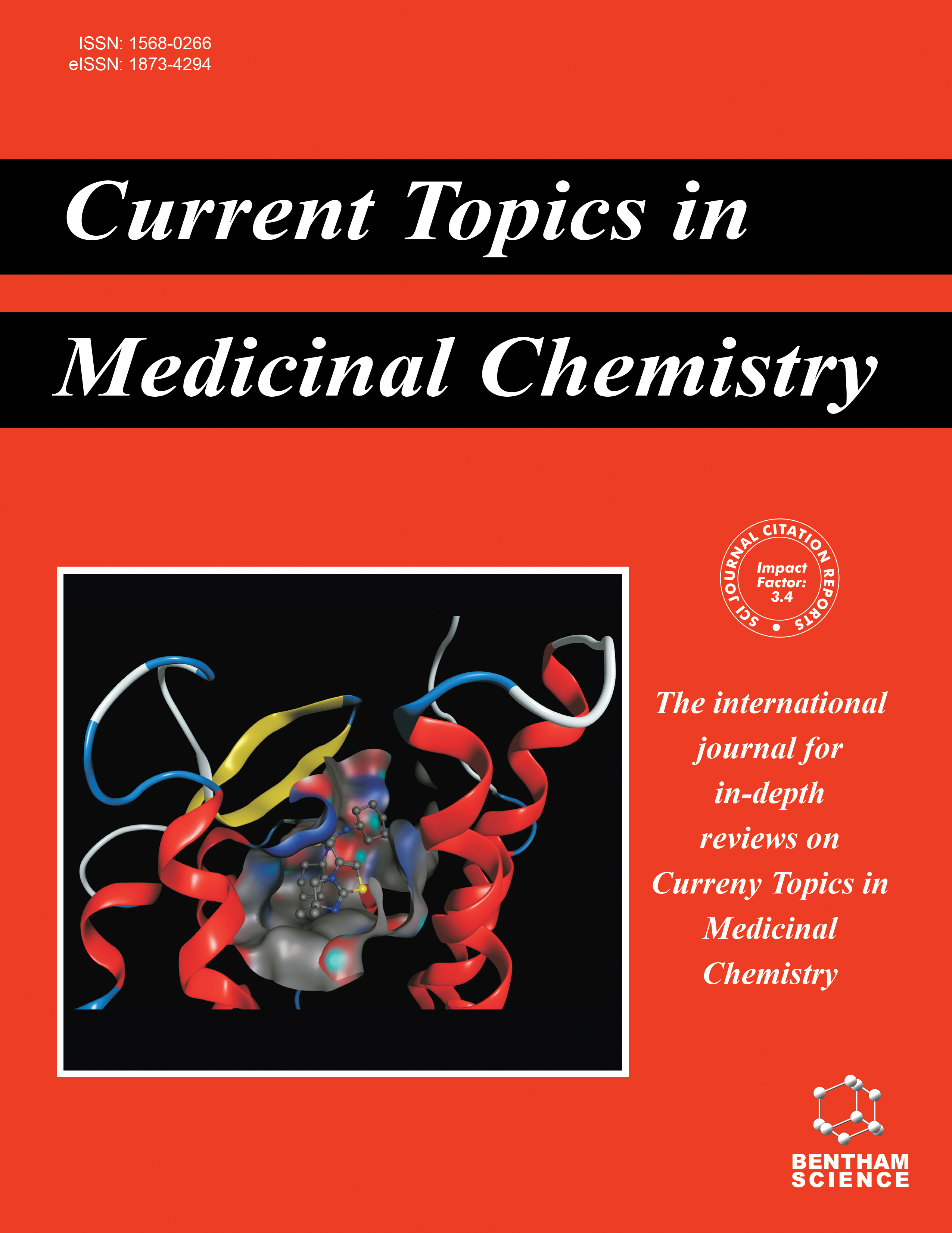- Home
- A-Z Publications
- Current Topics in Medicinal Chemistry
- Previous Issues
- Volume 16, Issue 24, 2016
Current Topics in Medicinal Chemistry - Volume 16, Issue 24, 2016
Volume 16, Issue 24, 2016
-
-
Molecular Origin of Color Variation in Firefly (Beetle) Bioluminescence: A Chemical Basis for Biological Imaging
More LessFirefly shows bioluminescence by “luciferin−luciferase” (L−L) reaction using luciferin, luciferase, ATP and O2. The chemical photon generation by an enzymatic reaction is widely utilized for analytical methods including biological imaging in the life science fields. To expand photondetecting analyses with firefly bioluminescence, it is important for users to understand the chemical basis of the L−L reaction. In particular, the e Read More
-
-
-
Multicolor Bioluminescence Obtained Using Firefly Luciferin
More LessAuthors: Masahiro Kiyama, Ryohei Saito, Satoshi Iwano, Rika Obata, Haruki Niwa and Shojiro A. MakiFirefly bioluminescence is widely used in life science research as a useful analysis tool. For example, the adenosine-5′-triphosphate (ATP)-dependent enzymatic firefly bioluminescence reaction has long been utilized as a microbial monitoring tool. Rapid and sensitive firefly luciferin-luciferase combinations are used not only to measure cell viability but also for reporter-gene assays. Recently, bioluminescence was utilized as a n Read More
-
-
-
pH Homeostasis in Contracting and Recovering Skeletal Muscle: Integrated Function of the Microcirculation with the Interstitium and Intramyocyte Milieu
More LessAuthors: Yoshinori Tanaka, David C. Poole and Yutaka KanoSkeletal muscle contractions and their attendant increase in metabolism accelerate production and accumulation of multiple metabolites in the cytoplasm, interstitium and vascular compartments. Continued myocyte contractile function and subsequent recovery is often highly dependent upon constraining metabolite accumulation. In particular, the control of pH ([H+]) during exercise is absolutely crucial for muscle force Read More
-
-
-
Calcium Signaling in Mammalian Eggs at Fertilization
More LessAuthors: Hideki Shirakawa, Takashi Kikuchi and Masahiko ItoThe innovation and development of live-cell fluorescence imaging methods have revealed the dynamic aspects of intracellular Ca2+ in a wide variety of cells. The fertilized egg, the very first cell to be a new individual, has long been under extensive investigations utilizing Ca2+ imaging since its early days, and spatiotemporal Ca2+ dynamics and underlying mechanisms of Ca2+ mobilization, as well as physiological roles Read More
-
-
-
Fluorescence Imaging of Blood Flow Velocity in the Rodent Brain
More LessAuthors: Kazuto Masamoto, Ryo Hoshikawa and Hiroshi KawaguchiAn adequate supply of blood flow to the brain is critically important to maintain long-term brain function. However, many issues surrounding the regulatory mechanism of the blood flow supply to the brain remain unclear, such as i) the appropriate range of capillary flow velocity to keep neurons healthy, ii) the size of the vascular module to support a functioning neural unit, iii) the sensing mechanism for capillary flow con Read More
-
-
-
Multivariate Analysis of Magnetic Resonance Imaging Signals of the Human Brain
More LessMagnetic resonance imaging (MRI) of the human brain plays an important role in the field of medical imaging as well as basic neuroscience. It measures proton spin relaxation, the time constant of which depends on tissue type, and allows us to visualize anatomical structures in the brain. It can also measure functional signals that depend on the local ratio of oxyhemoglobin to deoxyhemoglobin in the blood, which is believed Read More
-
-
-
Applications of Nuclear Technique to Biological Sciences Labelled Compounds, Radioactive Tracers, and X-Ray Tomography
More LessBy Y. KobayashiA radioisotope and its imaging have been powerful tools to explore the mechanism of chemical reaction and the dynamic behavior of trace element in biomolecular science and nuclear medicine. This article reviews some labelled compounds for radiopharmaceuticals in biochemical science and nuclear medicine using short-lived nuclides, the production and applications of “Multitracer” containing carrier-free radionu Read More
-
-
-
18F-Containing Positron Emission Tomography Probe Conjugation Methodology for Biologics as Specific Binders for Tumors
More LessAuthors: Kenji Arimitsu, Hiroyuki Kimura, Yoshinari Arai, Kazuto Mochizuki and Masumi TakiMolecular imaging can be used to evaluate the spatial–time change of the molecular biological phenomenon of the cell–molecule level in living bodies. Molecular imaging technology is expected to be applied in the fields of drug development, clinical diagnosis, and life science research. Specifically, positron emission tomography (PET) is a powerful non-invasive imaging technology for investigating physiological paramete Read More
-
Volumes & issues
-
Volume 25 (2025)
-
Volume 24 (2024)
-
Volume 23 (2023)
-
Volume 22 (2022)
-
Volume 21 (2021)
-
Volume 20 (2020)
-
Volume 19 (2019)
-
Volume 18 (2018)
-
Volume 17 (2017)
-
Volume 16 (2016)
-
Volume 15 (2015)
-
Volume 14 (2014)
-
Volume 13 (2013)
-
Volume 12 (2012)
-
Volume 11 (2011)
-
Volume 10 (2010)
-
Volume 9 (2009)
-
Volume 8 (2008)
-
Volume 7 (2007)
-
Volume 6 (2006)
-
Volume 5 (2005)
-
Volume 4 (2004)
-
Volume 3 (2003)
-
Volume 2 (2002)
-
Volume 1 (2001)
Most Read This Month
Article
content/journals/ctmc
Journal
10
5
false
en


